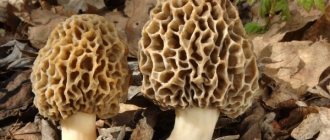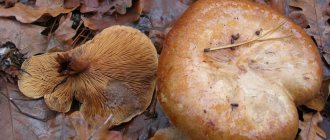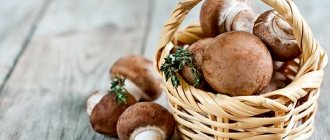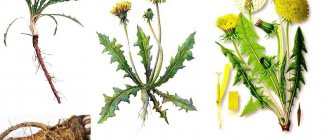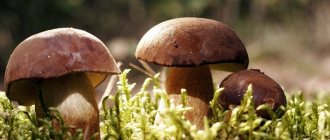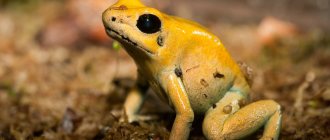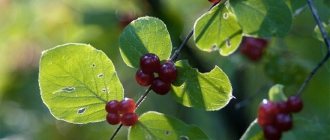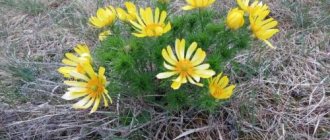Even in cold regions of Russia, if there is warm weather, you can pick mushrooms. From the end of spring, throughout the summer and autumn, until frost comes to the regions, mushroom fruiting will not stop. Some breeds will replace others until the mushroom season ends. Anyone who is well versed in the distinctive features of edible and conventional mushrooms from poisonous ones that can cause poisoning and intoxication of the body can go on a quiet hunt. Mushroom picking in Siberia and the Urals in 2021 offers the gifts of the forest not only to locals, but also to visiting guests. Wide forest zones with incredibly beautiful fauna, clean air and fertile soil will not leave without harvest even those who are poorly oriented in the area, but went into the thicket with a GPS navigator. High humidity, which persists even in the warm season, allows you to collect fruits even in the hot months: June, July and August. And although fruiting cannot be called “large”, a small volume will allow you to use protein-enriched products for cooking.
First and second courses, appetizers and pates, salads and even broths are made from edible ingredients that are tasty and healthy, saturating the body with beneficial vitamins, minerals, macro- and microelements. Since the beginning of the growth of autumn mushrooms in the Urals or Siberia, the harvested crop can be used to prepare preparations for the winter in order to prolong the enjoyment even in winter, without excluding the consumption of protein, low-calorie foods from the diet.
You can find out for sure whether mushrooms grow in the forest or not by studying reviews on forums and discussions in social networking groups dedicated to mushroom picking. Local residents always share photo reports and recommendations, suggesting to newcomers the best directions to travel by private car or public transport, in addition to those shown on mushroom maps, updated annually by experienced mushroom pickers.
What are the most popular mushrooms in 2021?
Despite the identical annual fruiting of edible mushrooms, mushroom pickers choose different fruits for collection. And if honey mushrooms, morels and mushrooms were popular last year, this year only the latter remain on the updated list. Most often, mushroom pickers began to discuss: collecting porcini and Polish mushrooms, row mushrooms, russula, obabkov (aspen and boletus), and moss mushrooms.
Despite annual changes in the list, the collection of oyster mushrooms can be called a “classic”. They grow in small quantities on stumps, rotten and fallen trees. They can be collected in any deciduous forest where old trees and felling sites remain.
In Siberia and the Urals, russula have always been in great demand. They are collected in buckets before the noble breeds begin to bear fruit. And although they are not often hunted, some prefer fragile fruits to fleshy ones, ideal not only in consistency and shape, but also in taste, aroma, and also the possibility of use. Compared to russula, porcini and Polish mushrooms do not require heat treatment, saving time on processing and initial boiling with further draining of the broth.
In regions with cold weather, no fewer poisonous mushrooms grow than in the Voronezh region, located in the central part of Russia. Therefore, before going on a quiet hunt, it is first recommended to find out the differences between edible and poisonous breeds, which are considered false. Extreme attention should be paid to especially dangerous mushrooms, such as: Pale toadstool, varieties of fly agarics, yellow champignon, etc.
Report on the topic Edible mushrooms
Edible mushrooms are those that can be eaten boiled, fried, salted and even raw without the risk of poisoning. There are fewer types of edible mushrooms than inedible ones, but there are still a lot of them.
Mushrooms are divided into 2 main types:
Under the cap, sponge mushrooms have sponge-shaped flesh (many small tubes). Such mushrooms are considered noble. These include: boletus, boletus, boletus, butterfly, moss mushroom, etc. These are the most common and frequently found mushrooms not only in Russia, but throughout the world.
Lamellar have plates under the cap. Spongy ones are more common. This type includes: russula, chanterelles, honey mushrooms, champignons, milk mushrooms, Volzhanka, rows, etc. Some of the lamellar mushrooms are only suitable for pickling because of their milky juice.
To distinguish edible mushrooms from their inedible counterparts, you need to know a few rules:
- Inedible ones have a bitter taste. It's safe to lick the cut of a mushroom to find out.
- The pink sponge of the cap is a sign of toxicity.
- Most poisonous mushrooms have a ring on the stem.
- The main rule: if you're not sure, don't take it.
Summer mushrooms in Siberia and the Urals
In 2021, as in previous years, mushroom pickers in the summer can hunt for common mushrooms, which consist largely of water and protein. You can collect the harvest in baskets and buckets, going to the mixed Siberian and Ural forest zones for the following loot:
milk mushrooms; honey mushrooms; waves.
Collected mushrooms can be used for pickling and preservation, after soaking the fruits in salted water. Milk mushrooms and fried mushrooms require longer heat treatment. The harvest is first washed and then soaked for several days, changing the water every 8-10 hours, not forgetting to add salt. Each recipe requires a certain volume to obtain a product without bitterness and unpleasant aftertaste.
Fruiting of mushrooms that require soaking occurs in the summer months. Depending on weather conditions, prey can be found in June, July, August and September. As soon as frost returns to the region, the mycelium falls asleep and the search stops.
Interesting answers
- Vieta's theorem formula for a quadratic equation
The sum of the roots of a quadratic equation of the form x2 + px+ q = 0 is equal to the coefficient p taken with the opposite sign, and the product is the free term q - Limestone is a mineral (report message)
Even in the Ancient world they knew about such a mineral as limestone. It was used by ancient people in the construction of the famous Egyptian pyramids - The role of obsolete and bookish words in speech (journalistic and artistic)
Obsolete words are units of language that have fallen out of active use. There are two types of obsolete words. Historicisms are words that have ceased to be used in speech due to the fact that the objects and concepts they call are no longer - Chronological table of Blok (life and work)
- Fires - report on life safety
A fire is an uncontrolled combustion process of any organic and some inorganic substances. This element can cause material damage and harm the health of people and animals.
Honey mushrooms in the Urals and Siberia, mushroom picking in 2021
Compared to other mushrooms, honey mushrooms most often germinate in families. Fruiting, which resembles weed growth, can stretch for several kilometers, making it easier to collect and reducing quiet hunting time. Subspecies allow local residents to harvest year-round, due to the growth of spring, summer and autumn honey mushrooms at different times of the year. Unfortunately, it is almost impossible to find Flammulina in cold winter climates. For winter mushrooms to bear fruit, the air temperature should be at least 3-5 degrees below zero.
Spring, meadow and summer subspecies are recommended for frying and soups. Assumption, royal and autumn fruits are universal and can be easily used as an ingredient for various dishes, as well as preparations for the winter. Pickled and fried fruits are stored well in the cellar, refrigerator and even pantry, provided that the lid is chosen correctly.
Before traveling, you should carefully study the distinctive features so as not to confuse false varieties with edible ones. The content of carcinogens, toxins and poisons, if a mistake is made, will cause severe poisoning, causing intoxication of internal organs. If help is not provided in time, death is possible.
Edible varieties
Edible mushrooms of Siberia are evenly distributed in the eastern and western parts. But their collection and preparation requires special skills. After all, representatives of edible and tasty species are easily confused with their poisonous counterparts.
Porcini
The most popular representative, which impresses with its taste and appearance. White boletuses are difficult to confuse with any other species. They are distinguished by a spongy cap, milky or cream-colored, depending on ripeness, as well as a slightly convex stem, which also has a characteristic white color when cut. This beauty grows in coniferous, deciduous and mixed.
Porcini mushrooms exhibit a particular dislike for moisture; they are most often found on mossy surfaces. It is collected in the summer, in clearings and plantings. And also in the autumn - deep in the forests.
Boletus
Young representatives of the species have a slightly pinkish cap, which becomes creamy with age. The stem of the boletus is thick and white, slightly cylindrical in shape. So, if you cut it, it will quickly turn blue. Boletuses grow in forests. They can be found near aspen trees (as the name suggests), as well as poplar and birch trees. The soil near oak and willow also becomes a favorite place for aspen boletuses. This mushroom is a mycorrhiza-former and without this very interesting and complex “structure” between it and certain types of trees it simply will not survive.
Boletuses carefully select the quality of the soil; they create their mycelium in an area with a high content of peat and sand. It is best to collect such mushrooms in July. But, the representative is also found in the autumn, before the onset of the first frost.
boletus
It is distinguished by a dark cap, which remains white when broken. Most often, the mushroom is collected at an early age, because with development it loses its attractive appearance. Obabok always chooses a well-lit place for growth, but always moist.
Boletus mushrooms grow in deciduous forests. Mushrooms can be found in clearings or the edges of forests.
Fans of such hunting usually go for boletus in the first half of summer.
Closer to autumn, mushrooms of this type grow again.
By the way. Boletus and aspen boletuses are united by the common name “Obabok”, which is also the name of the genus to which they belong – the genus Leccinum (Obabok).
Butter
Distributed in taiga forests in Siberia. The species got its name due to its soft and cool cap. As soon as you pick it up, it seems that it is not a mushroom, but a piece of butter from their refrigerator. The cap itself is yellow-brown in color, its skin is mucous, and the base of the young mushroom is white or yellowish.
Siberian boletus grows in coniferous and deciduous forests. They are collected between August and the end of September;
Ryzhik
Saffron milk caps grow in coniferous forests
It belongs to category 1. It is distinguished by a reddish-red cap with a characteristic concavity and a short white leg. It also has a special aroma and milky juice, very brightly colored in shades of red. Grows in coniferous forests. You need to look for it near spruce and pine trees.
It is worth adding that most often saffron milk caps are located on the north side of the tree. The first saffron milk caps can be found in July, the last ones in September and October;
Volzhanka or Volnushka
The fungus is found in birch and mixed groves in sufficiently illuminated areas. It got its name from its wavy pink-orange cap with pubescent and downturned edges. The species is characterized by a short stem and fragile flesh. It is harvested from late July to mid-September.
Russula
In Siberia there is a huge variety of russula, which differ in the color of the cap. But what unites them is precisely a specific film on the surface. Based on the name, you shouldn’t try the mushroom, because, due to inexperience, you can “get” the toadstool. Russulas grow in ordinary and mixed forests. They are collected in early July and until the end of October.
Gruzd
Popular due to its wavy cap. It is valued not only for its appearance, but also for its taste and aroma. The most popular representative is distributed in coniferous and mixed forests. You can look for them from July to October.
Chanterelle
The cap is yellow, elongated, of a specific irregular shape or even depressed, with slightly rounded edges.
Irina Selyutina (Biologist):
The hymenophore of chanterelles is very different in appearance from the spore-bearing layer of other lamellar mushrooms. They have it represented by fairly thick folds, on the surface of which spores form. The pulp and spores of chanterelles contain the natural anthelmintic quinomannose. It has a negative effect on all representatives of arthropods that want to settle in its body. It also affects helminths. Due to the fact that there are virtually no worms in the pulp, chanterelles are classified as kosher mushrooms.
They can be found in the height of summer, when almost no other mushrooms are found. Prevail in mixed forests.
Honey fungus
It has a yellow, slightly brown cap with a white stripe. They grow in whole families of several. They are found mainly on 200 species of trees. They bear fruit in 2-3 waves per season. It is best to look for them in late August-September.
Edible and conditional mushrooms of the Urals and Siberia in 2021 in the photo:
Even a beginner can discover mushrooms in Siberia and the Urals in 2021, not to mention experienced mushroom pickers who go out on a quiet hunt in the warm season. Vast forest areas, combined with a variety of edible and conventional mushrooms, will not leave anyone without protein prey containing a minimum of calories.
